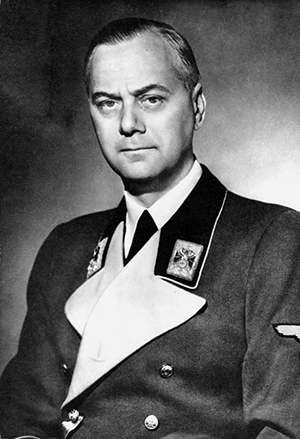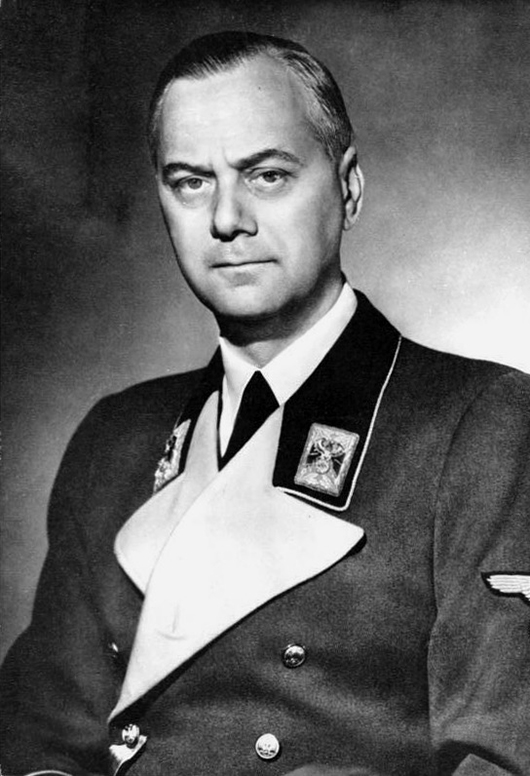
The Rosenberg Diary, kept by a confidant of Adolf Hitler whose racist theories underpinned Nazi Germany’s annihilation of six million Jews and five million others, had been missing since the Nuremberg war crimes trials ended in 1946.
For years the museum had been working with U.S. judical officials and law enforcement agents to recover Alfred Rosenberg’s writings, most recently in the hands of an academic publisher in upstate New York.
“Today that search ends,” said museum director Sara Bloomfield at a ceremony where the U.S. government formally transferred possession of the 425 pages of typed and handwritten papers.
“It’s in its proper home.”
The entire diary is available to the public in the archives section of the museum’s website (www.ushmm.org) alongside a transcript in German, with hard-copy versions expected from next year. It covers a 10-year period from 1934.
The U.S. Immigration and Customs Enforcement agency, which spearheaded the diary’s recovery, said it was first taken in the late 1940s by a Nuremberg prosecutor, Robert Kempner, “contrary to law and proper procedure.”
Kempner, a German-Jewish lawyer who escaped to the United States during World War II and settled in Pennsylvania, held on to the diary until his death in 1993.
Some early pages, used at the Nuremberg trials, have been in the possession of the Holocaust Memorial Museum in original and copied form.
But the vast bulk of the diary remained missing until November 2012 when the U.S. Attorney’s office in Delaware and Homeland Security special agents got a tip from an art security specialist working with the museum.
The diary was ultimately traced to the home of academic publisher Herbert Warren Richardson outside Buffalo, N.Y. He had apparently received them from one of Kempner’s assistants.
Through legal proceedings, the U.S. government reasserted ownership of the papers, which prior to the Nuremberg trials had been seized by U.S. military occupation forces in Germany at the end of World War II.
In his role as the Nazis’ chief racial theorist, Rosenberg was instrumental in developing and promoting the notion of a German “master race” superior to other Europeans and, above all, to non-Europeans and Jews.
Captured by Allied troops at the end of the war, Rosenberg was convicted at Nuremberg of war crimes and executed in Oct. 1946. He was 53.
ADDITIONAL IMAGE OF NOTE


